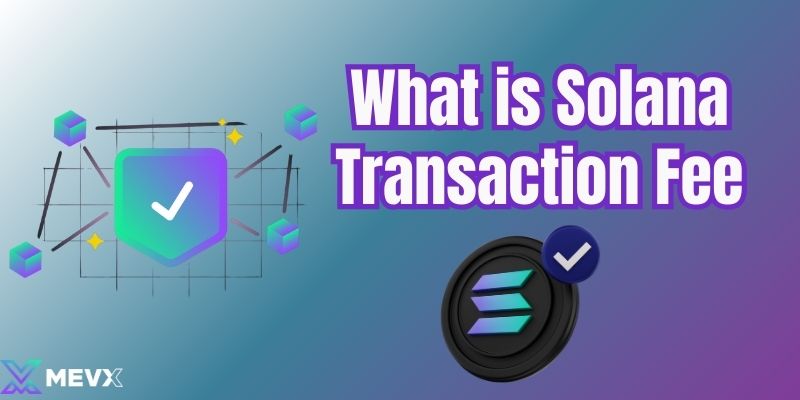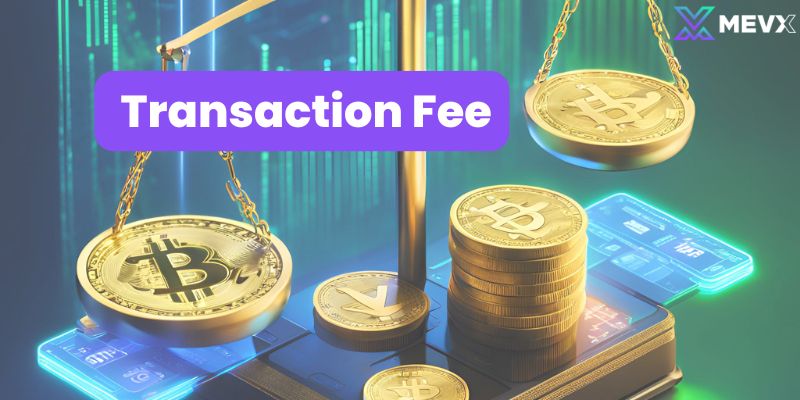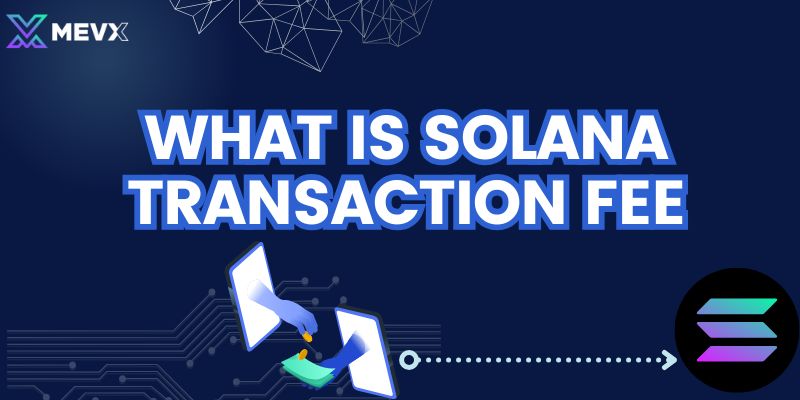What is Solana Transaction Fee?
Solana Transaction Fee refers to the cost that users must pay in SOL tokens to perform actions on the Solana blockchain, such as sending transactions, interacting with smart contracts, or using decentralized applications (dApps). Unlike many other blockchains that charge high fees for each transaction, Solana’s fees are notably low, making it a popular choice for decentralized finance (DeFi), NFTs, and other blockchain-based applications.
The transaction fee in Solana is designed to prevent spam transactions and incentivize validators for processing and validating transactions. However, unlike Ethereum and Bitcoin, where fees can skyrocket depending on network congestion, Solana’s fees remain relatively stable and inexpensive, thanks to its unique Proof of History (PoH) consensus mechanism and high throughput capacity.

How are Solana Transaction Fees determined?
The Solana transaction fee is based on two main factors:
-
Fee per transaction: This is a fixed cost for every transaction that users initiate. The cost per transaction is extremely low, typically in the range of $0.00025 per transaction, though this can vary depending on network conditions and the specific action being performed (e.g., sending tokens or interacting with smart contracts).
-
Compute Units: Each operation on Solana, such as executing a smart contract or transferring tokens, requires a certain number of compute units. These units are a measure of the computational resources required to execute a particular task. The more complex the operation, the higher the number of compute units needed, which may result in a slightly higher transaction fee. However, even with compute-heavy transactions, the cost remains significantly lower compared to other blockchains.
Solana’s Proof of History (PoH) consensus mechanism, which timestamps transactions to create a historical record, contributes to the network’s ability to process thousands of transactions per second (TPS) while keeping costs low. With this system, Solana minimizes the need for multiple validators to perform redundant checks, leading to a reduction in the transaction fees.
Why are Solana Transaction Fees so low?
One of the standout features of Solana is its low transaction fees, which is a major advantage over other blockchains like Ethereum. There are several reasons why Solana transaction fees remain so affordable:
High Throughput and Speed
Solana’s network is designed to handle high throughput, processing over 65,000 transactions per second (TPS). By scaling the blockchain’s capacity, Solana can process more transactions with less congestion, which directly impacts the transaction fee. The higher the number of transactions processed, the lower the cost per transaction becomes.
Proof of History (PoH) Consensus
The Proof of History consensus mechanism enables Solana to achieve fast and low-cost transactions by providing a cryptographic record of events that happen within the network. This allows validators to streamline the validation process, reducing the computational resources required to validate transactions. The efficiency of PoH results in lower fees for users.
Efficient Network Design
Solana’s network architecture is built to be highly efficient, minimizing the computational requirements for processing transactions. The combination of its low-latency block times and high-speed block propagation means that Solana can handle an incredibly high volume of transactions without inflating fees.
Incentive for Validators
Transaction fees in Solana are distributed to validators who process and confirm transactions. By keeping fees low, Solana ensures that validators are incentivized to secure the network without creating a barrier to entry for users or developers.

How do Solana Transaction Fees compare to other blockchains?
When compared to other blockchain networks like Ethereum, Solana transaction fees are remarkably lower. For example, Ethereum’s gas fees can fluctuate significantly based on network congestion, with prices reaching upwards of $50 or more during periods of high activity. On the other hand, Solana’s fees typically remain under $0.01, making it one of the most affordable blockchain networks for users and developers alike.
- Solana: Average transaction fee of $0.00025.
- Ethereum: Gas fees fluctuate, often exceeding $5 and reaching $50+ during peak times.
This stark contrast in transaction costs makes Solana transaction fees an attractive option for developers creating decentralized applications (dApps) or launching NFT projects, as they can avoid the high costs associated with Ethereum gas fees.
How to Pay for Solana Transaction Fees?
Solana transaction fees are paid in SOL, the native token of the Solana blockchain. When you initiate a transaction, the necessary fee is automatically deducted from your wallet balance. To ensure you have enough SOL to cover the fee, it’s important to maintain a sufficient balance in your wallet. In cases of low fees, even a small amount of SOL can cover several transactions.
For example, if you’re transferring a small amount of SOL or interacting with a smart contract, you won’t need to worry about paying high fees like you might on other blockchains. However, if you’re interacting with a decentralized finance (DeFi) application or executing complex smart contracts, make sure you have enough SOL in your wallet to cover the associated fees.
What affects Solana Transaction Fees?
While Solana is known for its low transaction fees, several factors can influence how much you pay for a transaction:
-
Network Congestion: During times of high demand, fees can slightly increase, but they rarely rise above the affordable range.
-
Complexity of the Transaction: More complex operations (like interacting with smart contracts) may require additional compute units, slightly increasing the fee.
-
Transaction Type: Certain types of transactions, such as token transfers or interacting with NFTs, may have different fee structures based on the required compute resources.
Advantages of Low Solana Transaction Fees
-
Attracts Developers: With minimal costs, developers can build and deploy decentralized applications (dApps) without worrying about prohibitive transaction fees for their users.
-
Increased Adoption: Low transaction fees help drive adoption of the Solana blockchain, especially in the realms of decentralized finance (DeFi), gaming, and non-fungible tokens (NFTs).
-
User-Friendly: Users can interact with the Solana blockchain without the fear of high costs, making it a more accessible platform for a broad range of applications.
-
Scalable Solutions: As more projects and applications launch on Solana, the low fees allow for seamless scaling without the concern of slow transaction times or expensive operations.

What is Solana Transaction Fee? In summary, Solana transaction fees are minimal, thanks to the network’s high throughput, the efficient Proof of History consensus mechanism, and its overall network design. These low fees allow users to send transactions and interact with decentralized applications without worrying about high costs. Solana’s ability to keep transaction fees low, while still offering high-speed and secure blockchain operations, makes it a compelling option for developers and users looking for a more efficient alternative to other blockchain platforms.
Whether you’re a user sending tokens or a developer launching an NFT project, Solana’s transaction fees are one of the major reasons to consider using the network. By lowering barriers to entry and reducing the cost of interacting with blockchain-based applications, Solana is contributing to the mass adoption of decentralized technologies.
If you want to learn more about how to interact with Solana, optimize your transactions, or explore staking and investment opportunities, visit MevXTrader to get started with Solana today!
